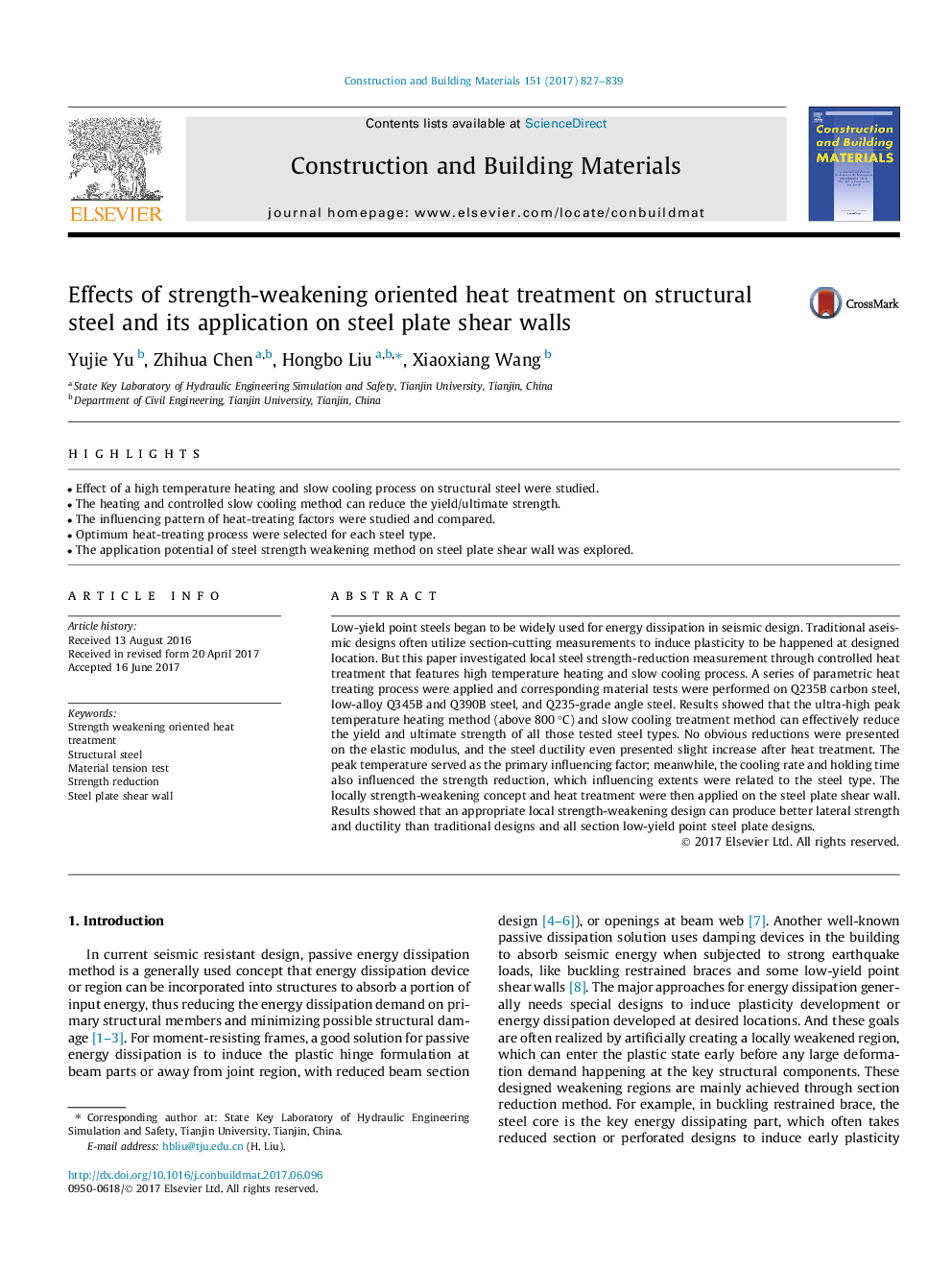| Article ID | Journal | Published Year | Pages | File Type |
|---|---|---|---|---|
| 4918236 | Construction and Building Materials | 2017 | 13 Pages |
Abstract
Low-yield point steels began to be widely used for energy dissipation in seismic design. Traditional aseismic designs often utilize section-cutting measurements to induce plasticity to be happened at designed location. But this paper investigated local steel strength-reduction measurement through controlled heat treatment that features high temperature heating and slow cooling process. A series of parametric heat treating process were applied and corresponding material tests were performed on Q235B carbon steel, low-alloy Q345B and Q390B steel, and Q235-grade angle steel. Results showed that the ultra-high peak temperature heating method (above 800 °C) and slow cooling treatment method can effectively reduce the yield and ultimate strength of all those tested steel types. No obvious reductions were presented on the elastic modulus, and the steel ductility even presented slight increase after heat treatment. The peak temperature served as the primary influencing factor; meanwhile, the cooling rate and holding time also influenced the strength reduction, which influencing extents were related to the steel type. The locally strength-weakening concept and heat treatment were then applied on the steel plate shear wall. Results showed that an appropriate local strength-weakening design can produce better lateral strength and ductility than traditional designs and all section low-yield point steel plate designs.
Related Topics
Physical Sciences and Engineering
Engineering
Civil and Structural Engineering
Authors
Yujie Yu, Zhihua Chen, Hongbo Liu, Xiaoxiang Wang,
